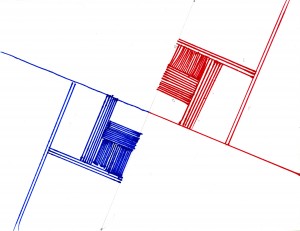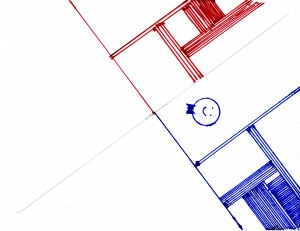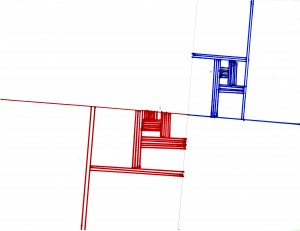Andrea Gershuny: Design of a Drawing Process (Assignment 03)
For this assignment, I designed a simple competition between two players. Here are my instructions and the results:
(The first drawing was a tie, P1 won the second drawing, and P2 barely won the third drawing.)
For the most part, the results were different from what I had intended but I wasn’t particularly surprised about that. I figured that, even though I’d proofread my instructions, there would be something ambiguous about them that I wouldn’t catch because I wrote them. Right away I decided I should have assigned the winner of the coin toss as P1 and the other player P2, that way we could see more definitely and clearly whether winning the coin toss led to winning the game. However, the important thing that people interpreted differently was the amount of lines to draw on each turn: I intended that each player would draw one line the first turn, then two, then three, etc., drawing one more line in each set each turn. However, most people thought that they should draw one line, then two, then three (1+2), then six (1+2+3), then twelve (1+2+3+6), etc. I found that the second interpretation actually resulted in a bigger difference in outcome between players (for example, the difference between the winner and the loser when the players followed my original instructions was only one turn), made the game go faster, and created (I think) a more visually interesting drawing.




Nice work. But perhaps I’m confused; are there operations the players can perform, after the initial conditions, that can throw the outcome of the game? Currently the outcome seems tightly coupled to just the first initial decisions.